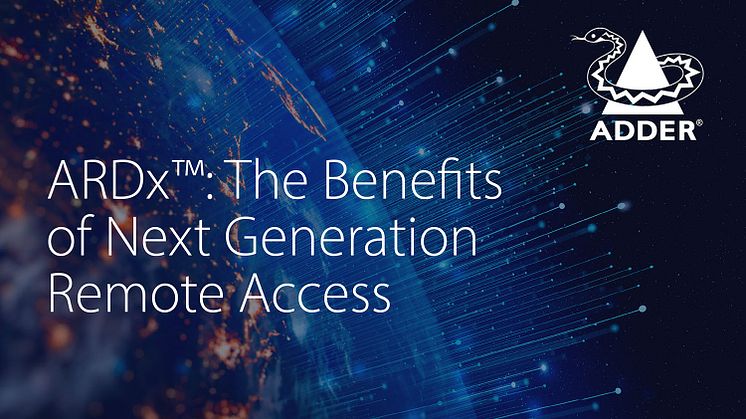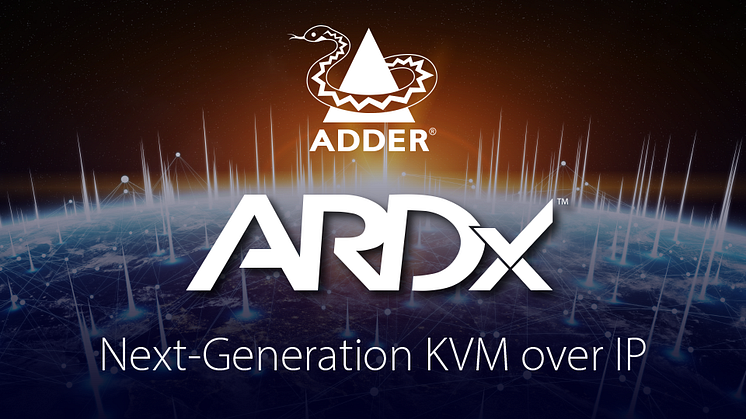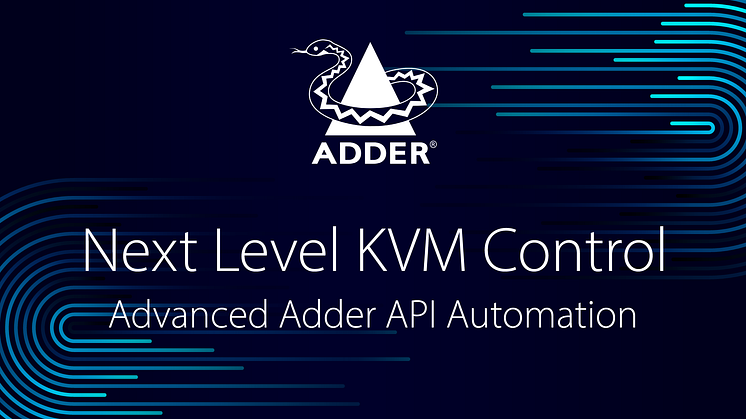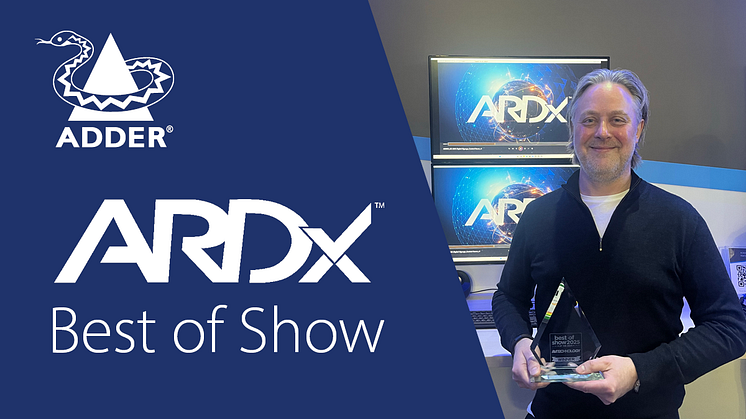
Blog post -
ARDx™: The Benefits of Next Generation Remote Access
A brief introduction to ARDx™
We live in a world ever more reliant on digital systems to manage and support every aspect of our daily lives.
And the sheer number of different situations where we, as users, are distant from the actual computer we're using is incredible. To name just a few diverse roles typically separated from their CPUs:
- Corporate IT staff
- Data center administrators
- Broadcast and film production teams
- Radiographers and other medical imaging specialists
- Radio DJs/Producers
- Factory machinery operators
- Air Traffic controllers
- Traffic management centers
- Security control rooms
...the list goes on!
Therefore, having reliable, fit-for-purpose remote access technology is increasingly a requirement for more and more of us.
Remote access technologies certainly aren't anything new. But the diversity of digital applications and the rapid growth in the sharing of streaming media, combined with expectations of working from anywhere, are drivers behind the need for remote access tailored to specific applications.
While remote access technologies can be either purely software- or hardware-based, Adder has for many years focused on providing hardware remote access solutions, and we're very excited about our latest developments in this area.
With our eyes very much on the future, we’ve launched a new technology, ARDx, which will grow into a suite of best-in-class remote KVM over IP products, delivering high performance remote access, optimized to a number of different use cases.
The new technology has several features - requested by our customers - which deliver a number of benefits. Compatible with any OS? Check. High quality digital video and audio? Check. Low latency? Check. Easy to install and administer? Of course, check!
There are more exciting features to come, but for the time being let's explore these four key benefits in a little more detail.
1.Out-of-band Access and Management.
There are some scenarios in which you might not be able to install software on the host computer – it’s locked down for security reasons – or you need to have control during the boot up sequence to access BIOS remotely.
It’s in these situations that you need out-of-band access and management. But what is it?
ARDx is described as an ‘out-of-band’ technology, which means that the control signals sent to the target computer use a different channel (ie a different ‘band’) from the standard network connection.
Out-of-band management is possible because ARDx is hardware-based: the ADDERLink® Portal R110 dongle simply plugs into the video and USB ports. No software needs to be installed on the host PC and, as a result, the Portal isn’t constrained by the operating system. It’s an important feature that is valued by customers with legacy or controlled systems where software installation is restricted.
And from a security point of view, ARDx’s use of hardware is critical: the target PC is securely isolated from the remote access gateway, which contrasts with software-based remote systems, which by default connect through the network.
2.Low Latency
Sometimes two-interaction via KVM isn’t a requirement, for example when all you need is to passively watch video streaming from multiple sources, like in a classic CCTV control room set up for instance.
But for remote access uses, the PC operator will want to respond to what’s on the screen with mouse and keyboard inputs in real-time. And to operate a computer as if it were at your desk, whilst (in the case of ARDx at its full capability), it’s actually 100s or 1000s of miles away, requires minimal network delays.
ARDx technology has been specifically designed for very low latency, allowing for highly responsive interactions between users and their remote computer. And, importantly, even with low latency we can still deliver the best possible images in situations where high fidelity is a must: for instance, video walls, medical imaging or the monitoring of manufacturing processes.
One of the ways we’ve achieved this is through the development of a proprietary codec for video compression, which uses advanced techniques to avoid the extra time (causing higher latency) required to compress and decompress video using other codecs such as H264.
3.High Quality Video and Audio
For an application like medical imaging, radiographers need a high level of detail and color fidelity in order to be able to interpret images accurately. Correct diagnoses may depend on it.
The ADDERLink Portal can offer HD video up to 1920x1080 resolution with ultra-smooth 60Hz frame rates.
In addition to a high resolution of pixels, we provide a high resolution of color. Consumer video streaming platforms like Netflix or Amazon Prime will often use a lower resolution of color in order to save on bandwidth. So, rather than each pixel being capable of showing all colors, they are clustered so that, say, groups of four pixels show the same color. It’s barely noticeable when watching a TV show, but when viewing a remote desktop, the user experience is impaired – for example when reading text on colored backgrounds.
The Portal provides chroma 4:4:4 uncompressed color, so that users can enjoy the highest quality and truest reproduction of the original imagery.
And what is great quality video without crystal clear audio? ARDx provides 16-bit digital stereo audio – perfect if your CCTV feed needs to pick up the audio for alarms or other ambient sound.
4.Easy to Manage
Regardless of the size of your organization, remote access is not just about a one-to-one user-computer interaction - usually there’s a requirement for teams of all sizes to have access to a number of different computers and even collaborate on them at the same time.
Administering the connections between multiple users and multiple remote CPUs shouldn’t have to be complex. This is something ARDx manages with ease.
Using our new remote access software, the ARDx Viewer, on Windows or Linux, admins can set up connections to multiple Portal dongles – either individually or in a batch. Users can be assigned one of four pre-defined connection configurations: Exclusive, Private, Shared, and View.
These settings allow admins to have granularity of control. For instance, they can set up a user so that their connection to one PC (via Portal) is view-only, but they could have full access rights on another Portal device. Such management is helpful for protecting access, for example, to confidential or personal data on one PC, while allowing full access to common corporate resources on another.
What next?
The ADDERLink Portal R110 is just the first Adder product to use the new ARDx technology. Combined with ARDx Viewer, it forms a suite which, as we have seen, delivers ease of use, out-of-band management, low latency and high quality media delivery.
It makes a compelling and powerful remote access solution but we also have plenty of plans for the technology in the future, building on its potential for custom integrations via API and its flexibility using different codecs.
If you’d like to learn more about how your business could benefit from ARDx, get in touch.
Read more:


